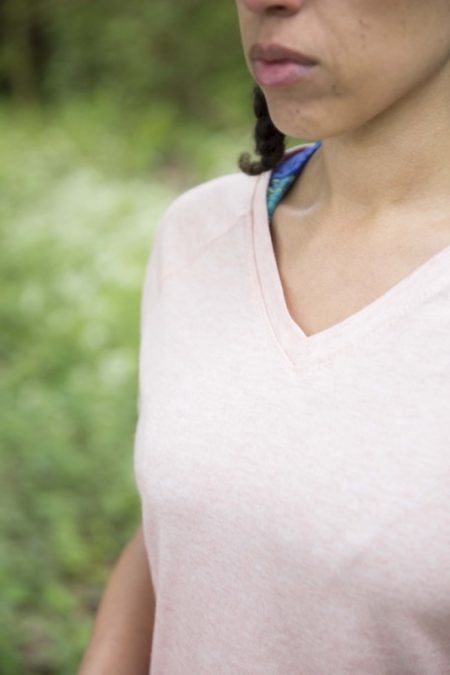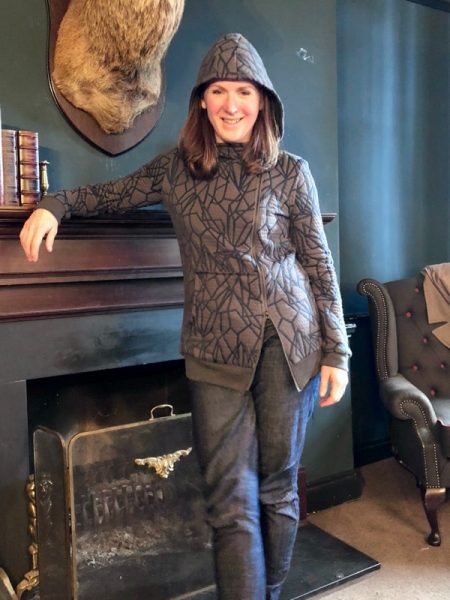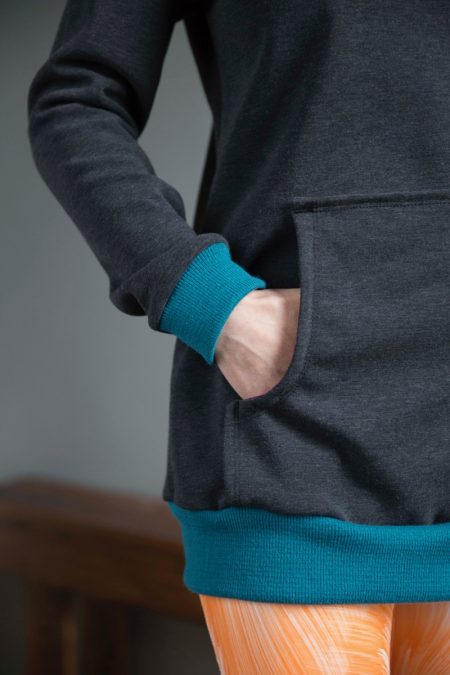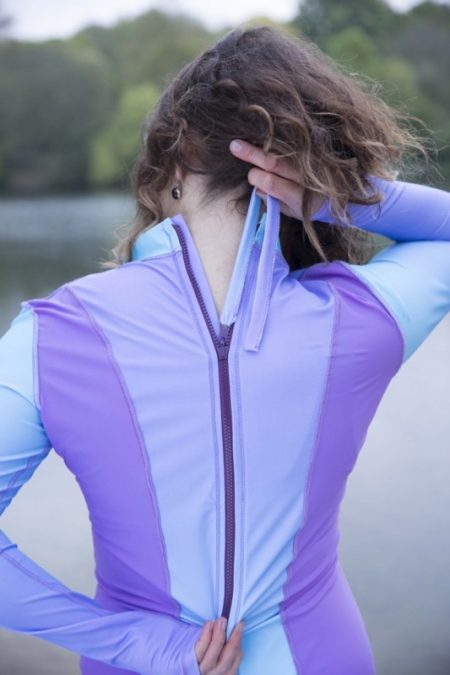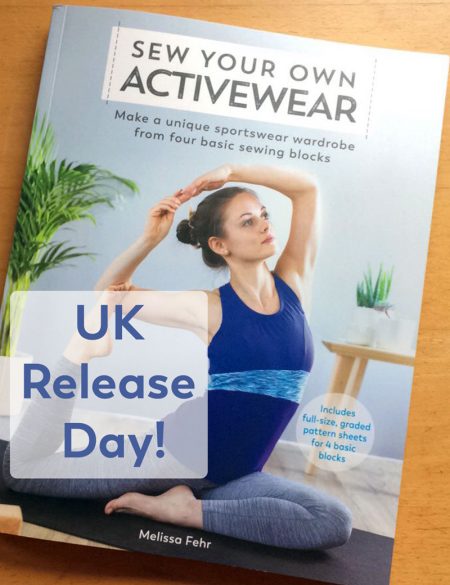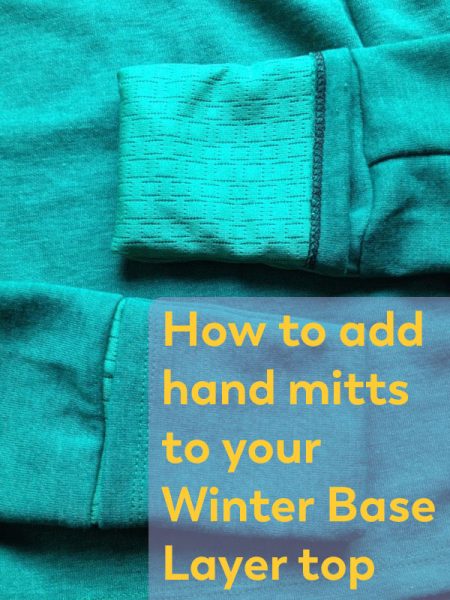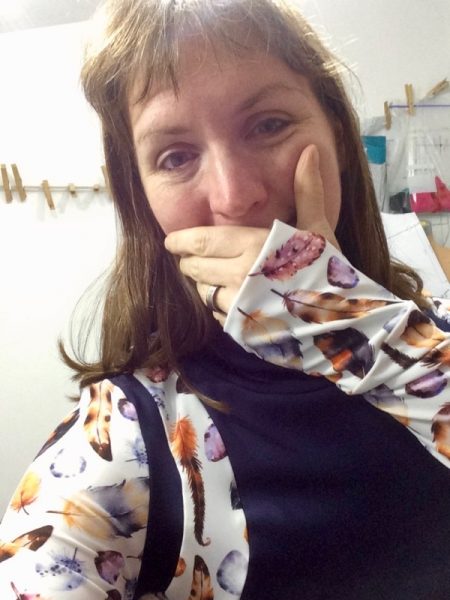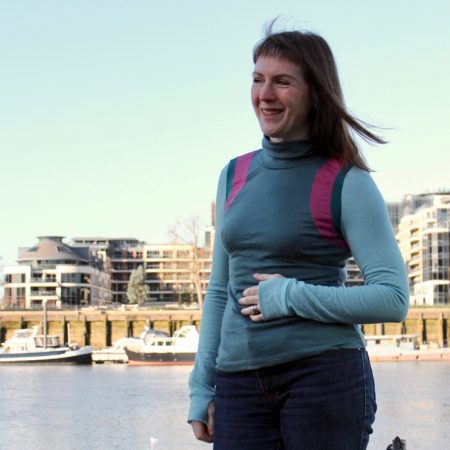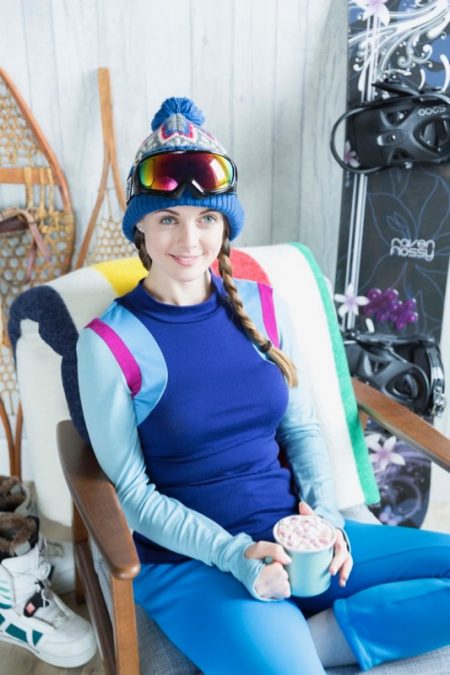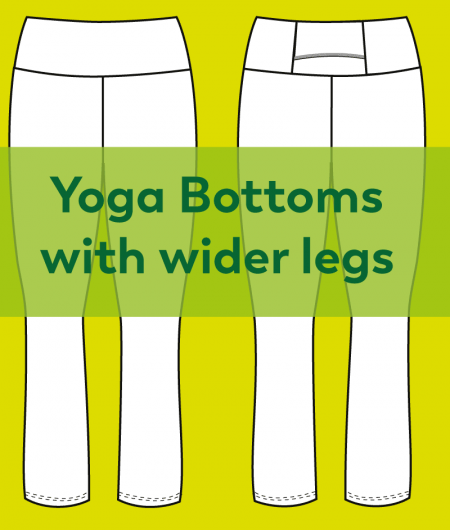This week I’d like to focus on the Raglan Tee – one of the most versatile designs in my “Sew Your Own Activewear” book and a great one to sew up if you’re more comfortable in looser-fitting workout tops. This pairs really nicely not only with the Split Shorts (as seen on my athlete-model Sanchia in the book), but also with the Yoga Bottoms or Active Leggings, too.
The “Sew Your Own Activewear” Raglan Tee
My quilted asymmetric Hoodie
One of the downsides of having such a tight writing deadline was that after I finished writing, designing, and illustrating each of the chapters in the book, all I’d want to do was sew up a MILLION versions of that design for myself – but I’d have to move on to the next design right away… And once I finished writing and sewing all the samples for my athlete models to wear in the photoshoots, I was a bit burnt out on activewear sewing in general for a few months, so I didn’t start to get excited about the designs again until late last summer. But luckily Fall is a great time to be sewing up some of the transitional designs in the book, and the Hoodie is a great one for layering over your kit to get back and forth to the gym (or running group, or climbing wall, or dojo, etc!).
The “Sew Your Own Activewear” Hoodie
This week we’re going to talk about the Hoodie design from my “Sew Your Own Activewear” book! It’s great to hear from so many of you in the UK who’ve been getting in touch to say how much you love the book, and it’s great to see you building up your To Sew lists from it already, too. As a designer it’s really interesting to me to see which designs immediately jump out at people, and the Hoodie has been appearing on quite a few lists – though I’m sure the chilly UK weather might have something to do with it, too!
The “Sew Your Own Activewear” Rashguard
When I was thinking about the sports I wanted to design for in the early stages of writing the book, I knew I wanted to somehow cover swimming, and I initially wanted to include a traditional swimsuit. But when it got down to the drafting instructions, it would’ve been tricky to construct using just the included blocks, or it’d mean I’d need to include a whole separate panty block just for the swimsuit so instead I took inspiration from my friend, Emily, who is an avid Cornish surfer as well as being a runner, climber, cyclist, and all-around advocate for natural movement (and indeed, the athlete model for this design in the book!).
“Sew Your Own Activewear” UK release day!
It’s here! The first release day for my “Sew Your Own Activewear” book is finally here!
My “Sew Your Own Activewear” book is released TODAY in the UK!! This represents over a year’s worth of work in writing, designing, drafting, illustrating, and sewing up thirteen different activewear designs which span all seasons and a ton of different sports.
How to add hand mitts or a turtleneck to the Winter Base Layer
I absolutely love the Winter Base Layer for cold weather exercising – I’ve both run and cycled in mine and I get so many compliments whenever I wear them! But with a few simple steps you can also change both the sleeves and neck to make it even more versatile.
Today I’ll be showing you how you can use the hand mitts from the Surf to Summit Top pattern instead of the included thumb cuffs, and also how to extend the neckline into a turtleneck (aka polo neck) if you’d prefer.
My feather-print Winter Base Layer top
So I’ve already shown you two versions of the Winter Base Layer top but both are really similar, both in colourblocking and for using the exact same base fabric. But this design is so much more versatile than what you’ve seen so far, and I wanted my second version to be a little different! So I changed up the way I played with the colourblocking and used some different fabrics, and I love this version just as much as my merino one!
My merino jersey Winter Base Layer top
Yesterday I talked all about the version of the Winter Base Layer top that appears in my “Sew Your Own Activewear” book, and you can tell I really liked it because I ended up making myself one that’s almost identical!! As much as I love my athlete models (and you know I do!) it was tough gathering up such gorgeous activewear fabrics and then making all the book designs to the measurements of my models, not for me! So once I had a bit of breathing time and the weather cooled down a bit, I knew I’d need a few more versions of this top to add to my own running wardrobe.
The “Sew Your Own Activewear” Winter Base Layer
The UK release date for “Sew Your Own Activewear” is less than a week away – it’s out on Friday you guys!! I’ll be shipping out all the signed pre-orders later this week (as soon as I receive the books myself!) regardless of where you live, so some of you may be getting it a few weeks before everyone else in your country, you lucky darlings, you!
I’m also throwing a bit of a launch party here in London on Friday night, so if you’re local and would like to attend, please leave a comment and I’ll send you the details – there’ll be complimentary punch plus the opportunity to buy signed copies on the night plus meet me and the athlete models from the book, too. And of course the dress code is activewear!!
So with it being launch week, I wanted to choose one of my favourite designs to focus on this week – the Winter Base Layer top!
How to widen the Yoga Bottoms’ legs
Current fashions in activewear are pretty much exclusively for a narrow, close-fitting ankle on leggings, but this wasn’t always the case. Just as in the wider fashion world, activewear follows current trends and what goes up must come down and wider legs will surely come back around again! When I started running in the early 2000s, my first few pairs of running trousers were all bootcut, and I know there are people out there who prefer a wider ankle opening on their activewear, too. After all, do we not sew in order to have our clothing exactly the way we want it?
Luckily, altering the Yoga Bottoms in order to have a straight leg or bootcut is really simple. As this design doesn’t change much from the block below the knee, you can actually make this alteration at any stage before cutting the fabric, but if you’d like to do the same to, say, the Active Leggings, you’ll want to widen the lower legs of you block before following the pattern change instructions from the book.

